Secondary dominant chords are incredible when it comes to enhancing your chord progressions and making your tracks pop.
They can add tension, interest, and complexity to your tracks, as well as help you create smoother modulations and more dynamic harmonic movement.
That’s exactly why I’m breaking down everything you need to know about secondary dominant chord.
This way, you can successfully incorporate them into your music, elevate your tracks, and learn a little something about music theory in the process.
In today’s secondary dominant chord article, we’ll be breaking down:
- What a secondary dominant chord is ✓
- The role of the dominant in harmony ✓
- Dominant 7th chords explained ✓
- Identifying secondary dominants ✓
- Understanding “V of V” concepts ✓
- Examples in major keys/minor keys ✓
- Creating smooth modulations ✓
- Adding tension and resolution ✓
- Taking your chord progressions to the next level ✓
- Advanced tips for experimenting ✓
- Enhancing emotional impact ✓
- Much more about secondary dominant chord ✓
After this article, you’ll know everything about using secondary dominant chords to create more engaging and professional-sounding tracks.
Plus, you’ll be able to really push your creativity and better understand different harmonic possibilities to play around with.
So, let’s dive in…
Table of Contents
What is a Secondary Dominant Chord? Breaking it Down
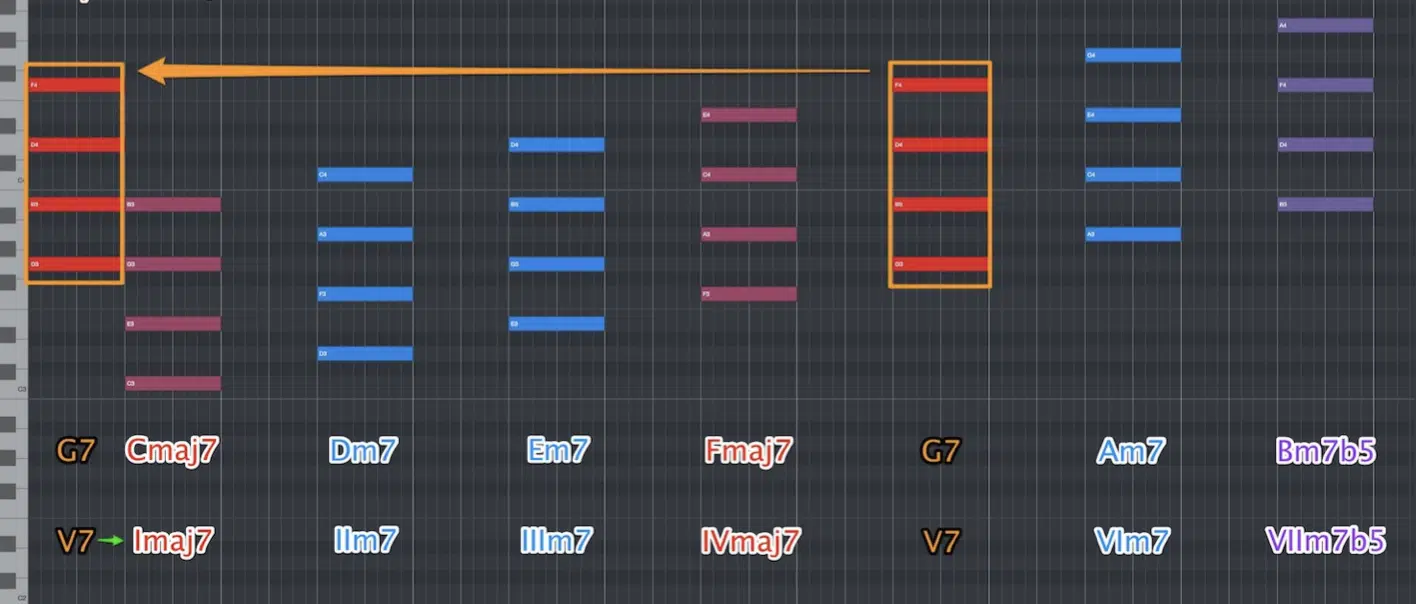
A secondary dominant chord is a dominant chord that resolves to a chord other than the tonic chord, causing a brief shift in the harmonic center.
Basically it makes a regular chord feel like the main chord, giving it a momentary sense of importance.
For example, in the key of C major, a G7 chord is the dominant seventh chord… But an A7 chord can function as a secondary dominant chord, leading to the D minor chord.
Understanding secondary dominant chords can seriously enhance your chord progressions and some serious tension and interest to your tracks.
Which, as you know, is what people really react and resonate with.
A secondary dominant chord provides a way to momentarily shift the harmonic center 一 creating a sense of movement and progression.
And, when used effectively, secondary dominant chords can make your music sound more dynamic and engaging.
They are a powerful tool to have in your arsenal so you can get extra creative with your chord progressions; which we’ll break down in detail throughout the article.
Understanding the Theory Behind Secondary Dominant Chords
To grasp the full potential of secondary dominant chords and use them to your full advantage, let’s dive into the theory foundations.
-
The Role of the Dominant in Harmony
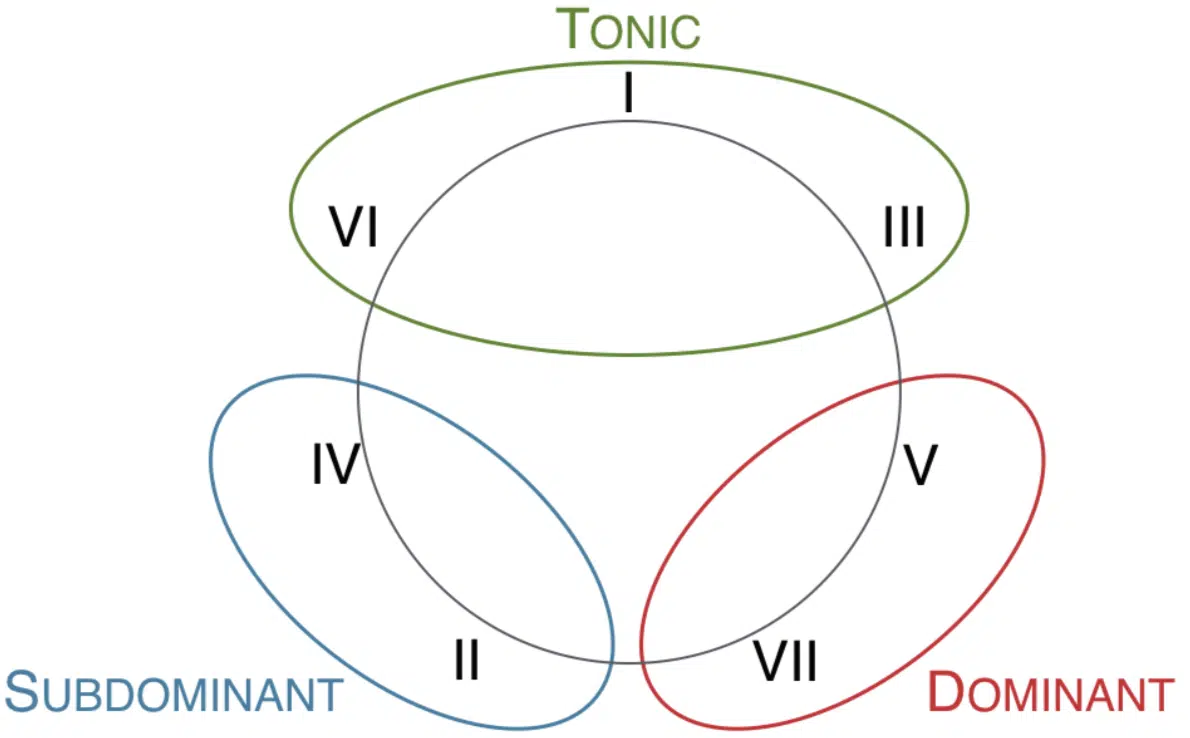
The dominant chord plays a key role when it comes to harmony (typically the fifth chord in a scale and resolves to the tonic chord).
This resolution creates a sense of closure and satisfaction.
In C major, the dominant chord is G, and it naturally resolves to C, the tonic 一 this movement from dominant to tonic is a cornerstone of Western music.
However, the dominant chord is not limited to resolving only to the tonic chord.
It can lead to other chords within the key to create a secondary dominant effect.
For instance, in C major, an E7 chord (the dominant of A minor) can lead to A minor for a fresh, intriguing sound.
This ability to lead to various chords is what makes secondary dominant chords so versatile and beneficial to know about as musicians/producers.
They can always bring more harmonic richness and complexity to the table.
-
Dominant 7th Chords: Explained
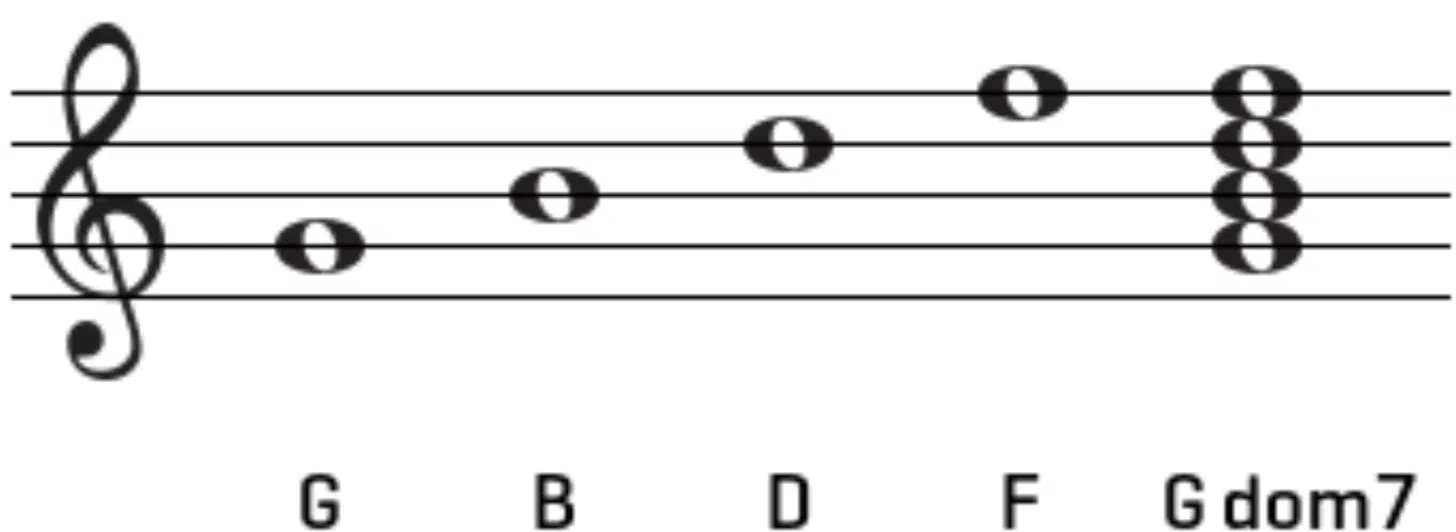
A dominant seventh chord consists of a:
- Major triad
- Minor seventh
This combination creates a tension that seeks resolution.
For example, a G7 chord in C major scale includes the notes G, B, D, and F 一 this chord naturally resolves to C major, creating a sense of finality.
Dominant seventh chords can also serve as secondary dominants like, for example, in C major, a D7 chord can act as a secondary dominant, resolving to G major.
This use of dominant seventh chords can not only help you explore new harmonic variations, they’re essential in creating tension.
As well as driving harmonic progressions forward and helping you really dive into music theory (if nothing else, to help you break the rules efficiently).
Side note, if you’d like to learn all about triads, we’ve got you covered.
Pro Tip: Typically, a secondary dominant is notated as V of X 一 where X is the chord to which it resolves. For example, D7 (V of V) indicates that D7 leads to G major, which is the dominant of C major.
-
Functional Harmony: The “V of V” Concept
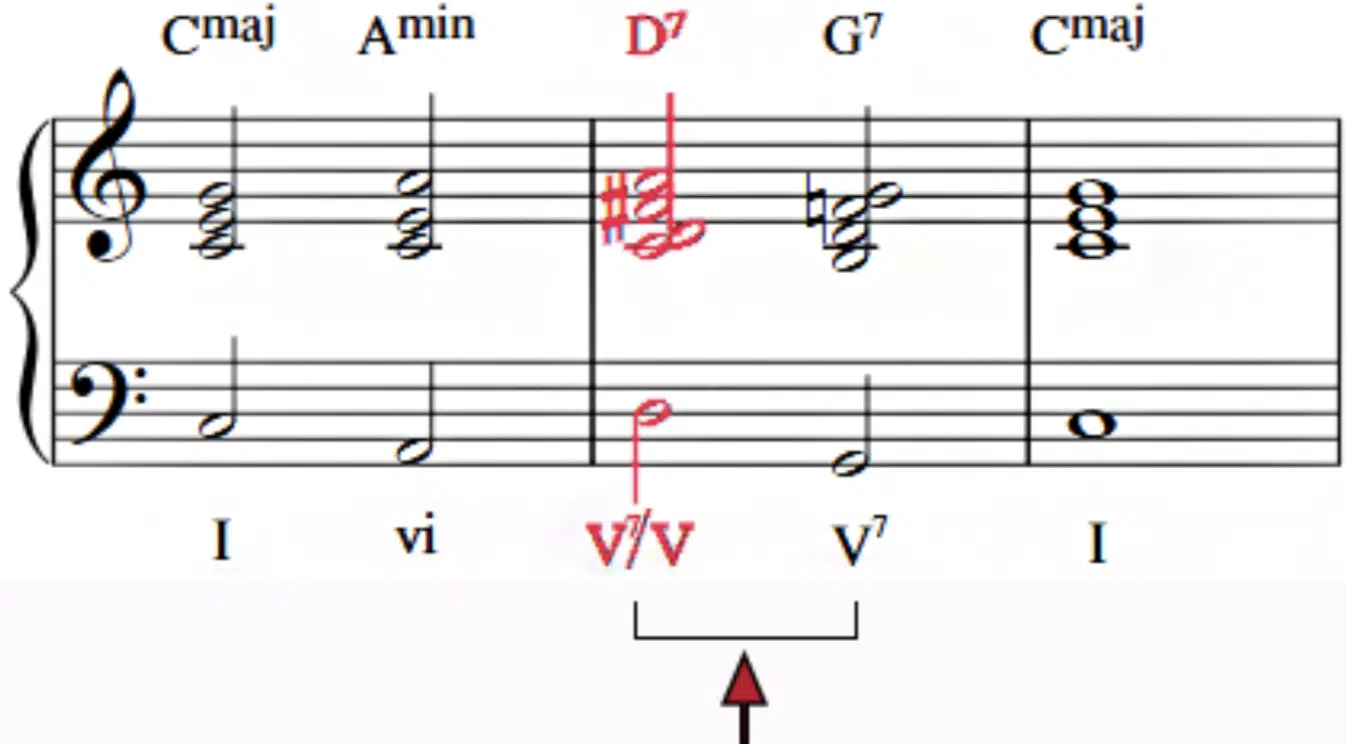
The “V of V” concept is essential for understanding secondary dominants.
This idea refers to a dominant chord leading to another dominant chord to create a chain of tension and resolution.
For instance, in the key of C major:
- A7 is the secondary dominant (V of ii) leading to D minor
- D7 is the secondary dominant (V of V) leading to G major
This progression (A7 – D7 – G) introduces layers of harmonic complexity and interest.
By using the “V of V” concept, you can create extended sequences that keep your music engaging and dynamic.
Plus, it allows you to explore new harmonic possibilities, like using a secondary dominant chord to modulate to a different key smoothly.
In C major, you might use E7 (V of vi) to move towards A minor 一 creating a fresh and unexpected twist in your chord progression.
Another approach you can play around with is chaining secondary dominants, like D7 leading tone to G7, which then resolves to C major.
NOTE: This technique, common in jazz and classical music, helps build anticipation and resolve in your tracks, making them more captivating.
How to Identify Secondary Dominants in a Key
Recognizing secondary dominants in different keys requires a solid understanding of their function and notation, which is exactly what we’re breaking down right now.
-
Secondary Dominant Examples in Major Keys
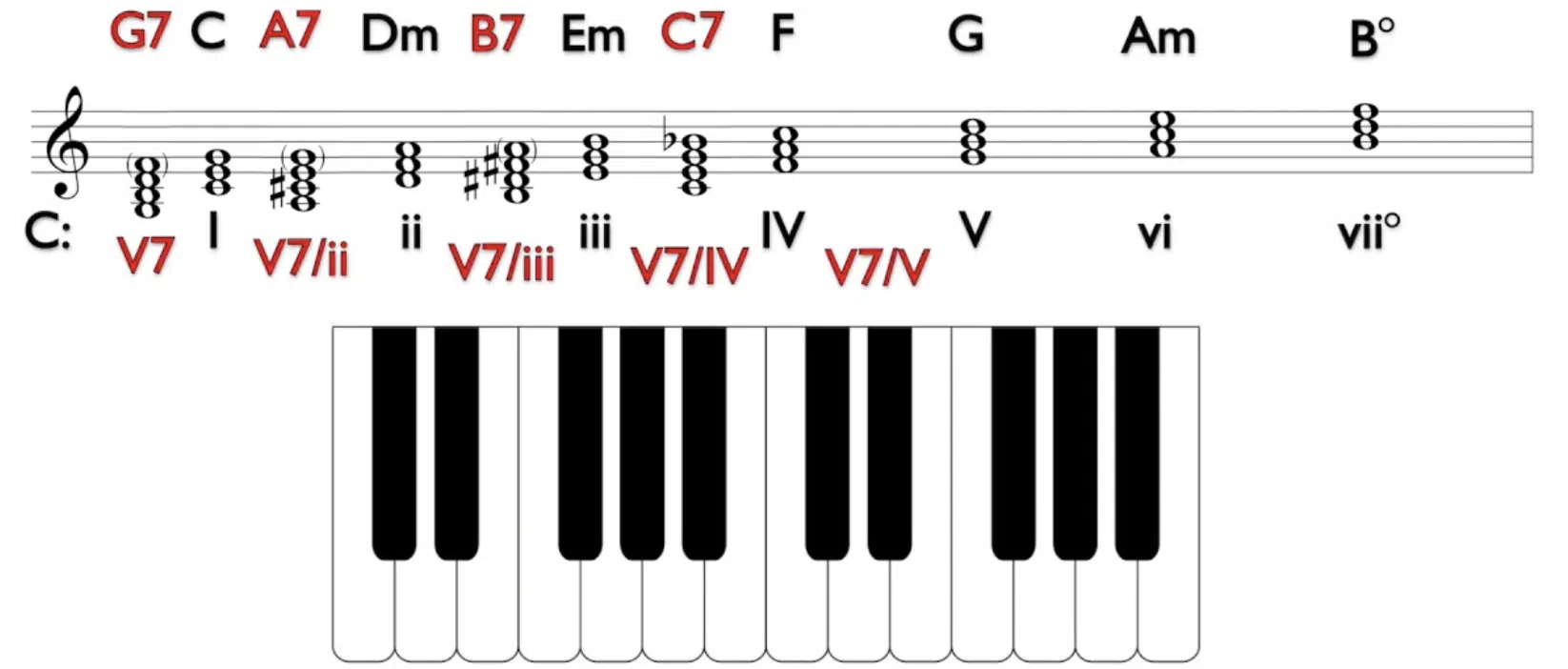
In major keys, secondary dominants add color and variety to chord progressions.
For example, in a C major chord, the secondary dominant D7 leads to G major, and similarly, A7 can lead to D minor, and E7 can resolve to A minor.
These chords temporarily shift the tonal center, creating a sense of movement and transforming a simple progression into something more engaging.
For instance, a C major chord progression like C – G – Am – F can become C – E7 – Am – D7 – G – G7 – C.
This new progression introduces tension and unexpected resolutions 一 making the music more dynamic.
When you use a secondary dominant chord in this way, it can elevate a standard progression and add some extra layers of complexity and interest.
Secondary dominants also work well in more complex progressions…
In a chord progression like C – Am – Dm – G, adding secondary dominants can create C – E7 – Am – A7 – Dm – D7 – G.
Each secondary dominant, as you now know, creates a moment of tension that resolves perfectly to pump up the overall harmonic structure of the song.
By understanding how to incorporate secondary dominants, you can add depth and intrigue to your chord progressions, nothing to it.
-
Secondary Dominant Examples in Minor Keys
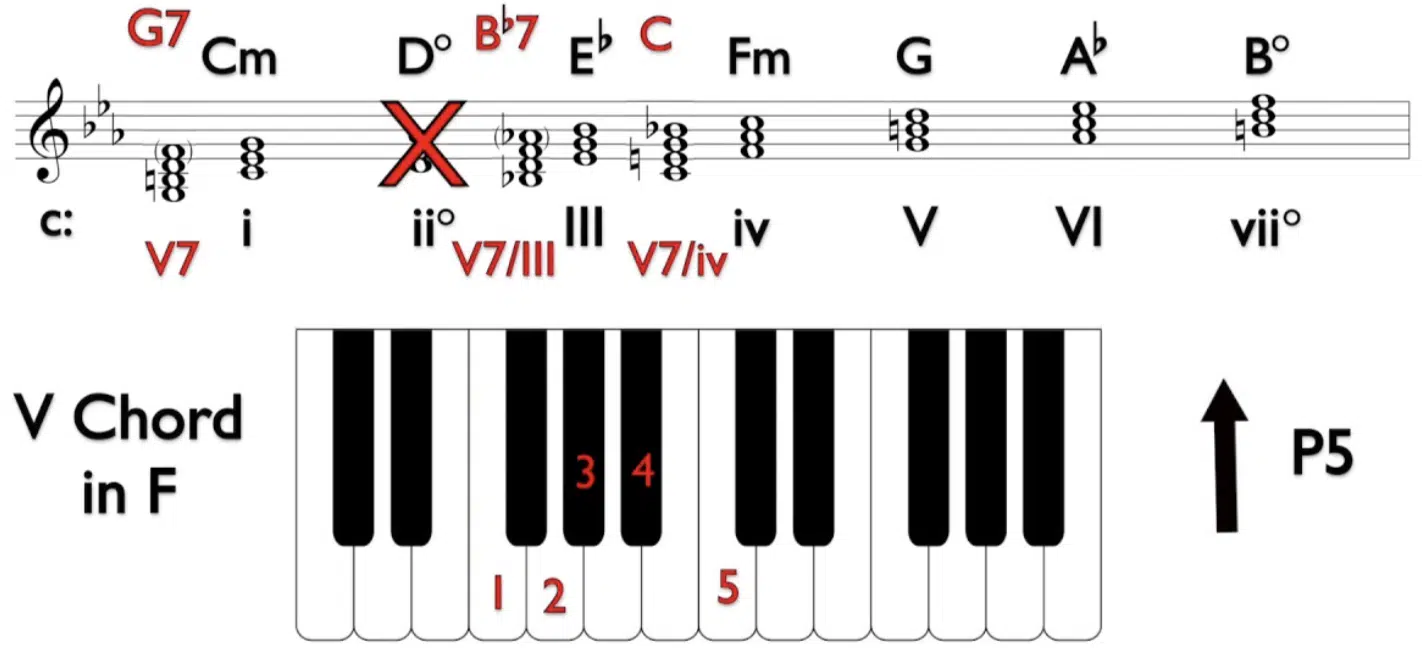
In minor keys, secondary dominants function similarly, providing a solid harmonic palette for you to experiment with.
For example, in A minor, E7 can lead to A minor, and B7 can resolve to E minor for that sweet, sweet tension that is resolved by the following chord.
Just like in a major key, a minor key secondary dominant chord can add depth, like Am – Dm – E7 – Am being enhanced to:
- Am
- C7
- F
- B7
- E7
- Am
Each secondary dominant chord progression introduces a new layer of harmonic interest 一 making your song more complex and interesting.
If you’re looking to transform a simple progression into a more show-stopping one, secondary dominants are the way to go.
Secondary dominants in minor keys can also create unexpected twists. In A minor, a progression like Am – G – F – E can be transformed into Am – G – C7 – F – B7 – E.
Remember, it’s all about tension and release, period.
How to Use Secondary Dominants to Enhance Your Chord Progressions
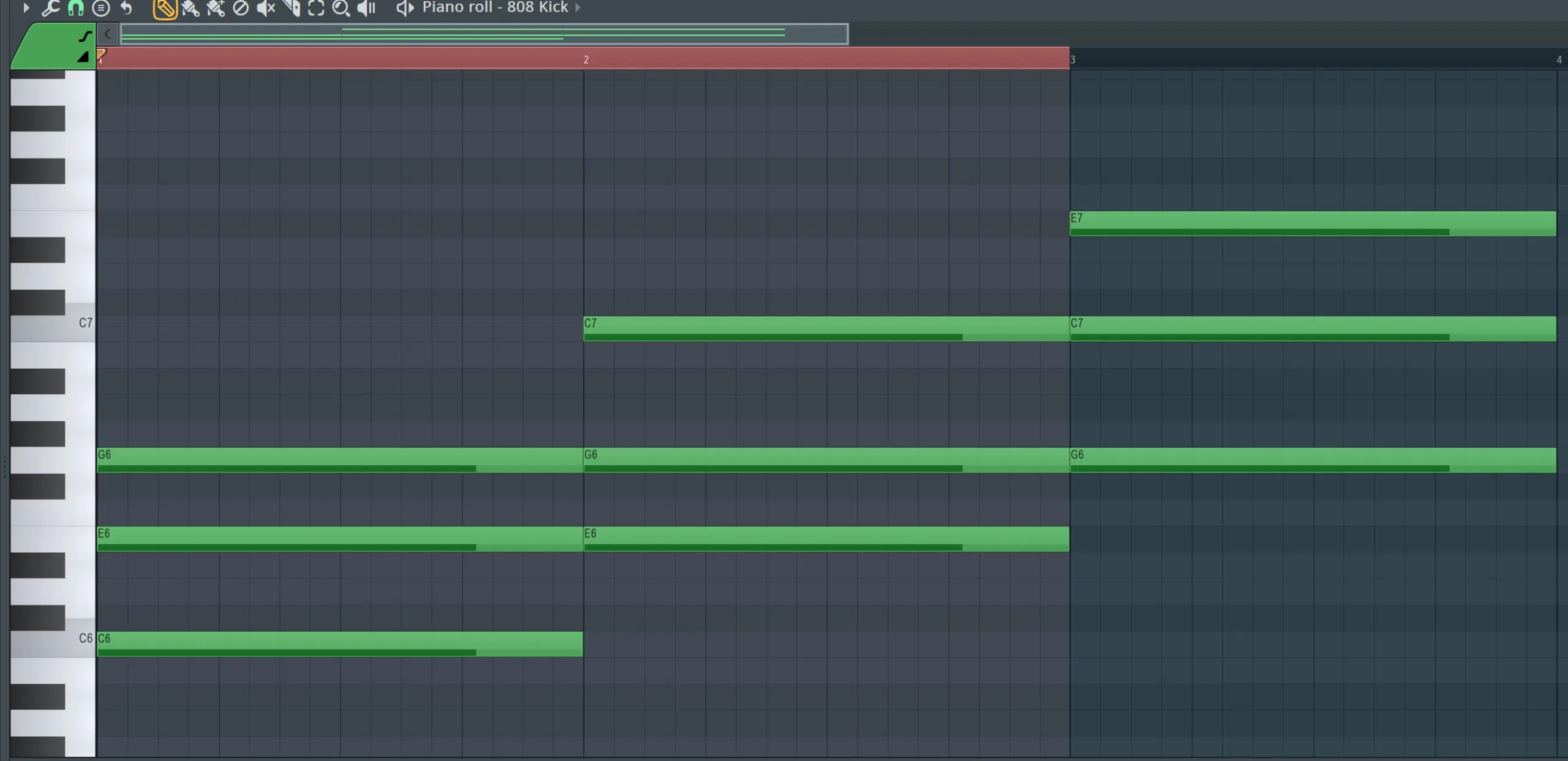
Voice leading and inversions can enhance your use of secondary dominant chords in more than one context.
By smoothly connecting the notes of each chord, you can create epic transitions, like in the progression C – E7 – Am, using inversions can make the transition from E7 to Am way smoother.
Also, combining secondary dominants with other chords can add complexity to your progressions.
For example, in C major, a progression like C – E7 – Am – A7 – Dm – G can be enhanced by adding non-diatonic chords.
This creates a way more interesting harmonic texture.
Remember, understanding how to combine secondary dominants with other chords can elevate your tracks.
For example, a basic progression like C – G – Am – F can become:
- C
- E7
- Am
- A7
- Dm
- G
This new progression introduces tension and unexpected resolutions 一 enhancing the overall harmonic structure of the piece.
By experimenting with secondary dominants, you can add layers of complexity and interest to your chord progressions.
Bonus: Advanced Tips
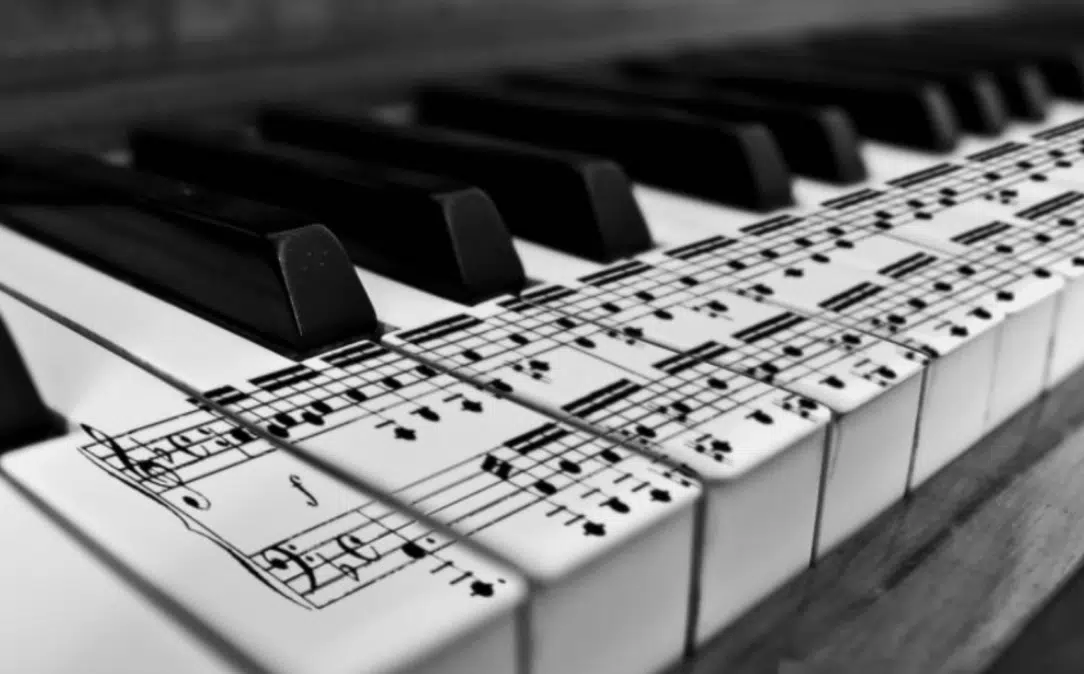
Experimenting with variations of secondary dominant chords can create some really interesting results from a production standpoint.
For example, using an altered chord instead of a standard secondary dominant can add unique tension.
Try incorporating a secondary dominant before a ii chord or iv chord for an unexpected twist.
Understanding music theory and how diatonic chords function within the major scale can help you make informed choices about where to place these chords.
Using secondary dominants before a subdominant chord or subsequent chord can enhance your progressions.
For example, placing an A7 before a D minor (iv chord) or G major (v chord) adds depth.
Songs secondary dominants often use these techniques to create memorable moments, which is the main key when you’re trying to create show-stopping songs.
By throwing in some major triads and emphasizing the fifth degree, you can create more interesting harmonic progressions that stand out in your songs.
It will make people really stop and listen.
Pro Tip: When planning a key change, use a secondary dominant to smoothly transition to the new key. Simply identify the scale degree of the target chord in the new key, and introduce its secondary dominant beforehand.
For example, if you’re moving from C major to G major, use a D7 chord to lead into G major; it will make things sound more interesting, professional, and polished.
Secondary Dominant Chord: Final Thoughts
Understanding and using secondary dominant chords can significantly elevate your chord progressions 一 adding depth, tension, and interest to your music.
By using these advanced techniques that we covered today, you’ll be able to create more engaging and dynamic tracks that stand out.
To take your music to the next level, don’t forget to download the completely free, highly-renowned Advanced Chord Progressions Pack.
It includes 24 unique, impressive MIDI chord progressions that you can instantly plug and play into your own music.
They’re the best way to make your tracks stand out and help you understand different advanced chords and progressions.
By using them, you’ll set yourself apart from 99% of producers who only have access to basic combinations.
So think about how invaluable it can be, especially if you don’t want to have to worry about any theory essentials.
Now, go use your new knowledge of secondary dominants to create epic chord progressions that make your tracks pop and skyrocket them to the top.
Until next time…







Leave a Reply
You must belogged in to post a comment.